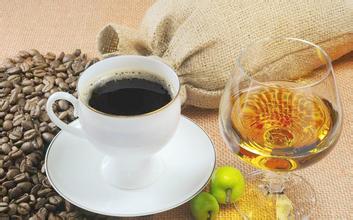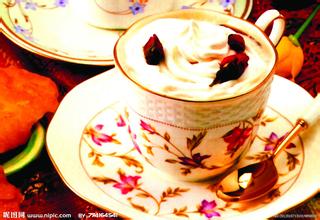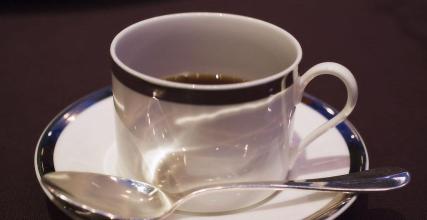The characteristics of Jamaican Coffee introduce the flavor and taste of Jamaican coffee manor producing area
A closer look at the myth of Blue Mountain coffee is necessary because images of the past and reality of today often do not coincide. In 1725 Sir Nicholas Lawes brought the first Blue Mountain coffee seeds from Martinique to Jamaica, where they were planted in St Andrew. Today St. Andrew's is still one of the top three growing regions for Blue Mountain coffee, the other two being Portland and St. Thomas. Thomas) producing area. Within eight years, Jamaica exported more than 375 tons of pure coffee. Coffee production peaked in 1932, harvesting more than 15000 tons of coffee.
But by 1948, coffee quality had declined and Canadian buyers refused to renew the contract, so the Jamaica government set up the Coffee Industry Council to save the fate of premium coffee. By 1969, the situation had improved, as Japanese loans had improved the quality of production and thus secured the market. Even in 1969, Japanese coffee drinkers were willing to pay insurance for the coffee, but today it has reached the point of being a cult favorite.
By 1981, about 1500 hectares of land had been cleared for coffee in Jamaica, followed by investment in another 6000 hectares. In fact, today's Blue Mountain region is a small area of only 6000 hectares, and not all the coffee labeled "Blue Mountain" can be grown there. An additional 12000 hectares are devoted to growing two other types of coffee (non-Blue Mountain coffee): High Mountain Supreme and Jamaica Prime Washed Jamaican.
Jamaica Blue Mountain New Coffee Bean
The real Blue Mountain Coffee is one of the world's best grown coffees, and Jamaica's weather, geology and terrain combine to provide the ideal location. The ridge across Jamaica extends to the east of the island, and the Blue Mountains rise to more than 2100 meters. Cool, foggy weather and frequent rainfall have tempered this fertile land with rain. Here coffee trees are grown in mixed cropping, alongside banana and avocado trees on terraces.
Blue Mountain coffee is also grown on small estates such as Wallenford Estate, Silver Hill Estate, and J. Martinez's Atlanta Estate. Even the largest planters in the region are small-scale farmers by international standards, many of whom are smallholders whose families have worked the land for two centuries. The coffee industry in Jamaica faces a number of problems, such as the effects of hurricanes, increased labor costs and difficulties in mechanizing terraces. Many small estates and farms are difficult to rationalize.
Blue Mountain Coffee, however, is one of those coffee retailers that value credibility and want to stock some coffee anyway. A leading British retailer says he will continue to sell Blue Mountain coffee year-round regardless of price because he has many customers who only identify with Blue Mountain

Important Notice :
前街咖啡 FrontStreet Coffee has moved to new addredd:
FrontStreet Coffee Address: 315,Donghua East Road,GuangZhou
Tel:020 38364473
- Prev

Taste smooth Mexican Coffee Flavor Manor introduce Aldura Coffee
Mexicans are enthusiastic and optimistic, and the chocolates in Mexican coffee perfectly reflect this. There are different methods of Mexican coffee, but the main difference is whether it contains alcohol or not. let's first introduce the practice of non-alcohol. Heat a cup of milk, a teaspoon of cinnamon powder and a teaspoon of vanilla powder in a pot. Keep it at medium temperature. The heat is not too high. The milk must not boil. And then join.
- Next

Ethiopian Coffee Flavor Taste Manor introduces Ethiopian Coffee Brands
The coffee ceremony in Ethiopia began when the hostess laid a 2mur3 square meter floor with a local grass, followed by a small stove for roasting coffee beans and a small table for coffee utensils. Then there is the washing of coffee beans. First take a bowl of light green coffee beans and wash them in a small basket, just like we wash rice, wash them and take them out
Related
- Detailed explanation of Jadeite planting Land in Panamanian Jadeite Manor introduction to the grading system of Jadeite competitive bidding, Red bid, Green bid and Rose Summer
- Story of Coffee planting in Brenka region of Costa Rica Stonehenge Manor anaerobic heavy honey treatment of flavor mouth
- What's on the barrel of Blue Mountain Coffee beans?
- Can American coffee also pull flowers? How to use hot American style to pull out a good-looking pattern?
- Can you make a cold extract with coffee beans? What is the right proportion for cold-extracted coffee formula?
- Indonesian PWN Gold Mandrine Coffee Origin Features Flavor How to Chong? Mandolin coffee is American.
- A brief introduction to the flavor characteristics of Brazilian yellow bourbon coffee beans
- What is the effect of different water quality on the flavor of cold-extracted coffee? What kind of water is best for brewing coffee?
- Why do you think of Rose Summer whenever you mention Panamanian coffee?
- Introduction to the characteristics of authentic blue mountain coffee bean producing areas? What is the CIB Coffee Authority in Jamaica?

